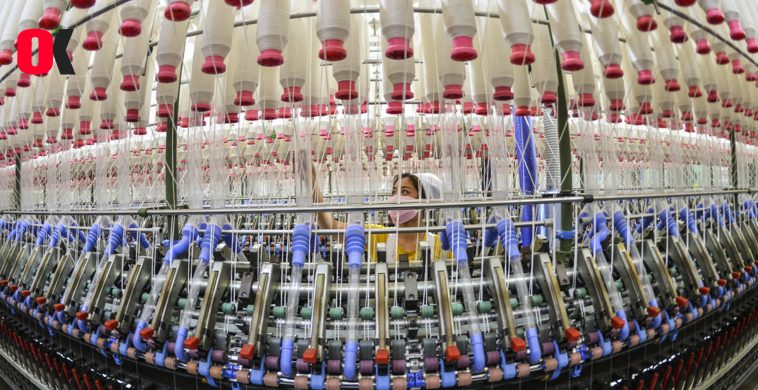The National Purchasing Managers Index continued to expand in May
Experts say that as investment and exports remain strong, the economy recovers. Officials and experts said on Monday that China’s economy maintained a steady recovery in May due to still active manufacturing activities. But rising raw material prices have put pressure on demand and are worthy of attention.
The National Bureau of Statistics said on Monday that the official purchasing managers’ index of China’s manufacturing industry was 51 in May, compared with 51.1 in April. Furthermore, Which is well above the 50 mark, indicating expansion.
Zhao Qinghe, a statistician at the National Bureau of Statistics, said: “The PMI reading has not changed much from the previous month, and the industry’s performance continues to be better than the same period in 2019 and 2020. Indicating that the manufacturing industry has maintained a steady expansion.”
The growth reading driven by the acceleration of production and the booming development of the high-tech manufacturing sub-industry. According to the bureau, the output and high-tech manufacturing sub-indexes rose to 52.7 and 55.2 respectively in May.
At the same time, due to the acceleration of construction activities and the expansion of service consumption.
However, recovery of non-manufacturing industries accelerated, and the PMI rose to 55.2 in May from 54.9 in April.
The Organization for Economic Cooperation and Development stated in its OECD Economic Outlook on Monday that as investment and exports remain strong and consumption gradually recovers, China’s economic recovery will continue.
The organization predicts that China’s economic growth rate will reach 8.5% this year. While the global economic growth rate will be 5.8%.
However, experts pointed out that the risk of rising commodity prices has exacerbated the cost pressure faced by downstream manufacturers, especially smaller manufacturers. Which may harm the recovery of investment and consumption in the future.
According to the National Bureau of Statistics, the sub-index of raw material prices rose to 72.8 in May, the highest level in recent years. Experts say this has inhibited manufacturers’ trends of taking new orders, hoarding raw materials and hiring new employees.
Small manufacturers bear the brunt. The PMI fell to 48.8 in May and 50.8 in April, falling into a contraction zone.
The main problem is not insufficient demand. Tut rising cost pressures eroding the profits of manufacturers, making them less willing to accept orders. Li Qilin, chief economist of Shanghai-listed Hongta Securities.
Li said that as market adjustments in the bulk commodity market began to take effect. However, the prices of some ferrous metal products in the domestic market declined in May, and cost pressures expected to gradually weaken.
China has taken a variety of measures to ease the cost pressure caused by rising commodity prices. Including reducing tariffs on some steel products, curbing speculation, and strengthening support for small businesses affected by the disaster. The People’s Bank of China has increased its financial support to small and micro enterprises. At the end of April, the balance of inclusive loans to small and micro enterprises was 16.8 trillion yuan (2.6 trillion US dollars), nearly one-third higher than the same period last year. That was the previous year.
MOBILE COMPUTERS WITH WHEELS WILL NOT CRASH





GIPHY App Key not set. Please check settings